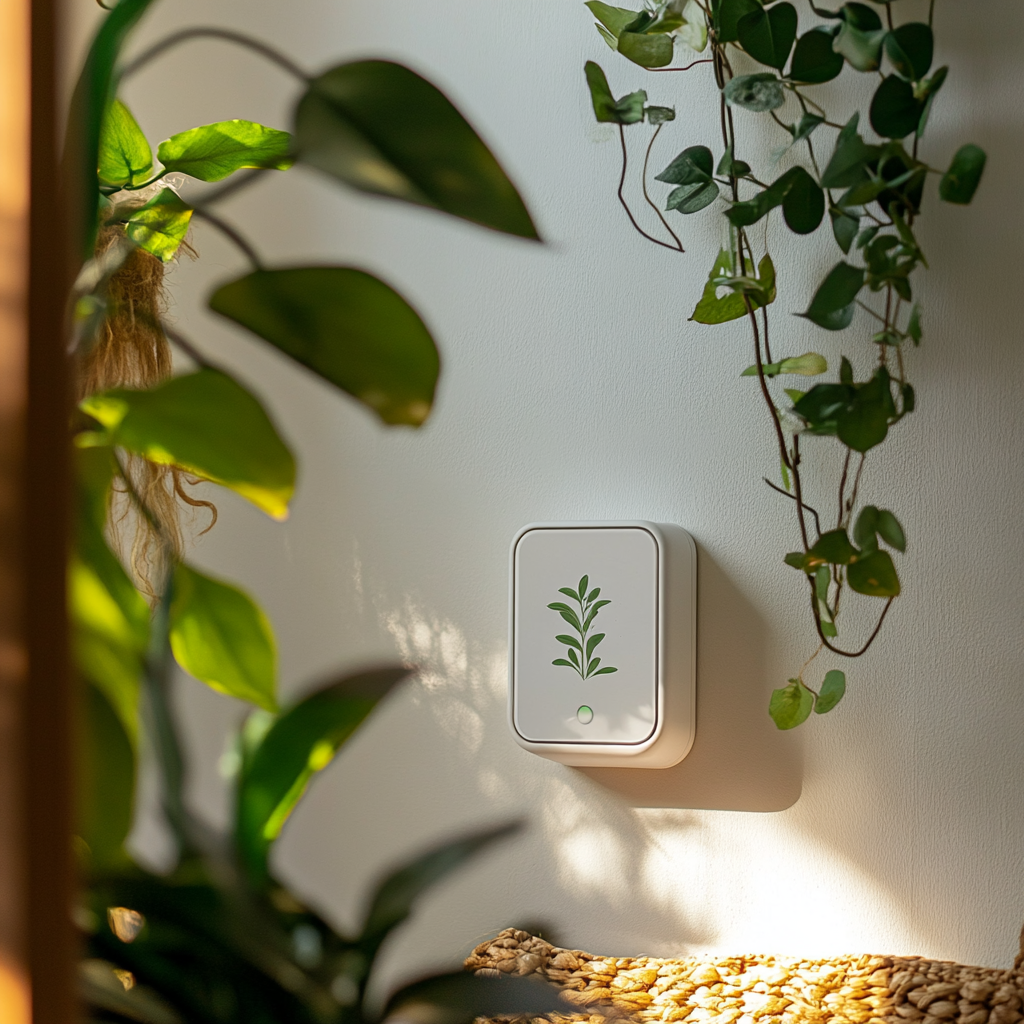As a homeowner, protecting your family from invisible dangers is important. Radon testing is a step that many American homeowners overlook, yet this colorless, odorless gas is responsible for an estimated 21,000 lung cancer deaths annually in the United States. Proper testing is essential and can save your family’s lives.
Radon is a naturally occurring radioactive gas that forms from the breakdown of uranium found in virtually all soils, rocks, and water sources. Radon doesn’t react chemically with other substances, so it moves freely through soil and into your home’s air supply. While outdoor radon concentrations are typically harmless due to natural dilution, the real danger emerges when it accumulates in enclosed spaces like your house.
The health implications are severe and undeniable. The U.S. Surgeon General and Environmental Protection Agency have identified radon as the second leading cause of lung cancer in America, making it the primary cause of lung cancer among non-smokers. The radioactive particles from radon decay become trapped in your lungs when inhaled, gradually damaging lung tissue over time and significantly increasing your cancer risk.
How Radon Infiltrates American Homes
The process typically begins beneath your foundation, where radon gas naturally seeps from surrounding soil and rock. Your home’s indoor air pressure is often slightly lower than the surrounding soil pressure, creating a vacuum effect that actively draws radon gas indoors through various entry points.
This infiltration becomes particularly pronounced during colder months when homes are sealed tight and the “stack effect” occurs—warm air rises and escapes through upper levels, pulling replacement air from below ground. Common entry points include:
- Foundation cracks: Even microscopic fissures in walls and floor slabs provide pathways
- Construction joints: Gaps where different foundation elements meet
- Service pipe openings: Spaces around water, sewage, or electrical line entry points
- Floor drains and sump pits: Unsealed drainage systems offer direct soil access
- Hollow wall cavities: Block walls can act as conduits channeling radon upward
While soil gas remains the primary concern, radon testing may also detect gas entering through private well water or, in rare cases, certain building materials like granite countertops or concrete blocks. However, these sources typically contribute minimal amounts compared to soil infiltration.
Any home can have elevated radon levels regardless of age, construction type, or whether it features a basement, crawl space, or slab foundation. Ironically, well-sealed, energy-efficient homes may actually trap radon more effectively, leading to higher concentrations.
Why Radon Testing is Non-Negotiable for Every Homeowner
Unfortunately, there is no “safe” level of radon exposure. Even concentrations below the EPA’s action guideline of 4 picocuries per liter (pCi/L) still pose health risks. The EPA follows the ALARA principle—keeping radon levels “As Low As Reasonably Achievable”—while strongly recommending mitigation action when levels reach 4 pCi/L or higher.
The Invisible Danger
Because radon is completely undetectable without proper testing equipment, you cannot rely on your senses or even your neighbor’s test results. Radon levels can vary dramatically between adjacent homes due to differences in construction, soil conditions, and ventilation patterns. The only way to know your family’s exposure risk is through professional radon testing.
When to Test Your Home
Radon testing should occur every 2-5 years, as levels can fluctuate due to weather patterns, soil moisture changes, and household ventilation habits. Priority testing situations include:
- Homes that have never been tested
- Before or after real estate transactions
- Following major renovations or structural changes
- When converting lower-level spaces for regular occupancy
- After installing new HVAC systems or making weatherization improvements
Some Options for Radon Testing
Here’s some methods to choose from when considering testing your home. We encourage making informed decisions when it comes to protecting your family’s health.
Short-Term vs. Long-Term Testing
Short-Term Tests (2-90 days)
These tests provide quick results, making them ideal for real estate transactions or initial screenings. Common types include charcoal canisters, electret ion chambers, and continuous radon monitors (CRMs). Short-term tests are convenient but may not capture seasonal variations in radon levels.
Long-Term Tests (90+ days)
These tests, typically running 3-12 months, provide more accurate annual average readings by accounting for daily and seasonal fluctuations. Alpha track and electret ion chamber detectors are commonly used for extended monitoring periods.
DIY Testing vs. Professional Services
DIY Radon Testing
Homeowners can easily purchase test kits online, at hardware stores, or through state radon programs that may offer free or discounted options. These kits include detailed placement instructions and prepaid laboratory analysis.
Professional Radon Testing
Hiring certified radon measurement professionals is recommended for real estate transactions or when unbiased, expert interpretation is needed. Look for professionals certified by the National Radon Proficiency Program (NRPP) or National Radon Safety Board (NRSB).
Proper Testing Protocols for Accurate Results
Following correct radon testing procedures ensures reliable results. Here’s some important factors:
Strategic Test Placement
- Location: Test in the lowest lived-in level where people spend more than four hours daily
- Height: Position devices 20 inches above floor level, ideally in the typical breathing zone (3-6.5 feet)
- Distance: Keep tests at least 1 foot from exterior walls, 3 feet from windows/doors, and away from drafts or heat sources
Closed-House Conditions
For short-term tests under 90 days, maintain “closed-house conditions” by keeping windows and exterior doors closed (except for normal entry/exit) for at least 12 hours before and during the entire testing period. Normal heating and cooling systems can operate, but avoid whole-house fans that bring in outside air.
Environmental Considerations
Avoid testing during severe storms or unusually high winds, as these conditions can affect results. Place tests away from high-humidity areas like bathrooms, kitchens, or laundry rooms, which may not represent typical living space exposure.
What To Do With Your Test Results
Radon levels are measured in picocuries per liter (pCi/L), with the average indoor level in American homes being approximately 1.3 pCi/L.
Result Interpretation
- Below 2 pCi/L: No immediate action required, but continue regular testing every 2-5 years
- 2-4 pCi/L: EPA recommends considering mitigation to reduce long-term health risks
- 4 pCi/L or higher: Take action immediately to reduce radon levels through professional mitigation
Addressing High Radon Levels Through Mitigation
If you discover elevated radon levels, you don’t need to panic—radon problems are highly treatable. Professional mitigation systems can reduce radon levels by up to 99%, making your home safe for your family.
Sub-Slab Depressurization
The most common and effective mitigation method involves installing a vent pipe and fan system that pulls radon from beneath your foundation and safely expels it outdoors above the roofline. This system works by reversing the pressure differential that draws radon into your home.
Professional Installation
Always hire qualified, certified radon mitigation professionals who can design the most effective system. After installation, conduct post-mitigation testing to confirm successful radon reduction and continue monitoring every two years.
How We Can Help You!
Understanding regional radon potential provides valuable context for your testing decisions. Homeowner’s interactive radon map offers insights into average radon levels by zip code, helping you understand your area’s general risk profile. Also see our press release with more information.
Use our radon map as a starting point for understanding your area’s radon potential, then follow through with home testing to determine your family’s actual exposure risk. Don’t wait until it’s too late.
At Homeowner.org, we’re here to guide you along the way in your journey regarding all things related to buying, owning, and loving your home. Check out our site for more today.


